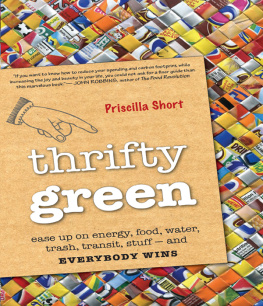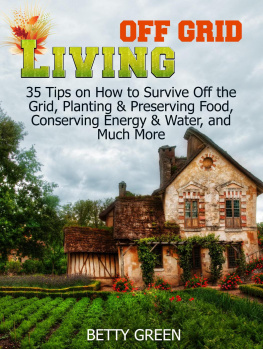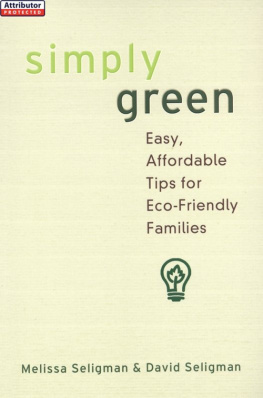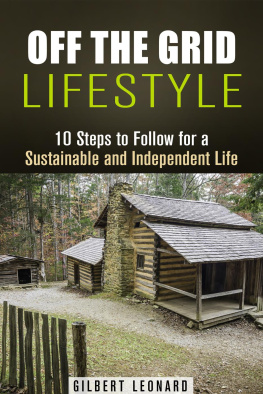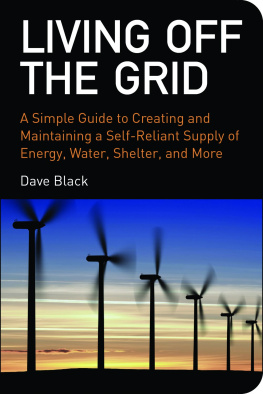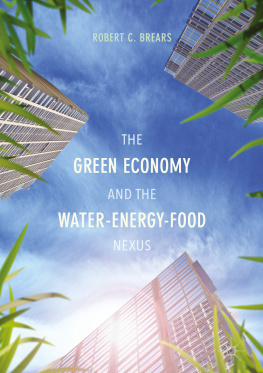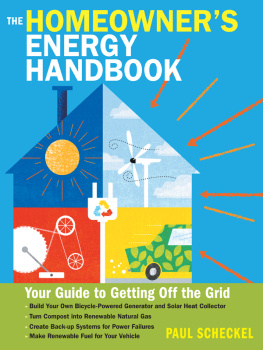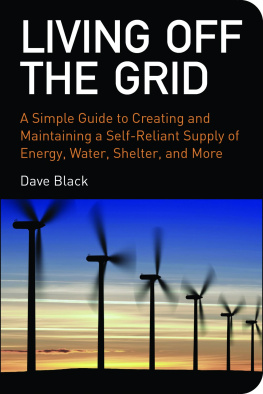
Praise for Thrifty Green
This inspirational guide demonstrates the extent to which thrifty living and green living truly go hand in hand. The advice and stories here give us all the tools to bring off-grid thinking and practices to our on-grid lives. And save money, and precious natural resources, in the process.
Califia Suntree and Pia Catton, coauthors of Be Thrifty: How to Live Better with Less
If you want to stay in denial and apathy, if you want to rationalize self-destructive patterns, this book's not for you. On the other hand, if you want to know how to reduce your spending and your carbon footprint while increasing the joy and the beauty in your life, if you want to live a low-cost, high-happiness life, you could not ask for a finer guide than this marvelous book.
John Robbins, author of The Food Revolution, Diet for a New America, and The New Good Life
Thrifty Green reads like a letter from an old friend sharing fascinating news about her experiment in tiny-footprint living. It is inviting rather than inveighing, refreshing rather than depressing. She provides more information than most how-to or why-to books on frugality, yet it feels more like going on an adventure with her, trying on her choices to see if they fit.
Vicki Robin, author of Your Money or Your Life
Both a compelling narrative and a collection of sage advice, Thrifty Green represents the next step in sustainable thinkingand it couldn't come at a better time.
Vanessa Farquharson, author of Sleeping Naked Is Green
The motivating voice of Thrifty Green is a new generation making it cool to care about conservation. With an integrated perspective of the systems, large and small, that govern our framework on energy use, water, trash, transportation and consumable goods, this book infuses a willing attitude for smart, sound, more sustainable ways of living. Without forfeiting comfort or convenience, Thrifty Green offers strategic, painless ways to conserve, conscious decision making, and helpful factoids that make the journey much more than the sum of its parts.
Rene Loux, author of Easy Green Living, co-founder of Andalou Naturals
You don't have to be rich or a rock star to figure out that living lighter is a lot more fun, healthier, and less expensive than you expected. Thrifty Green lays out the road. And you don't even need a bike or an electric car to drive there (though I'd recommend it).
Chris Paine, director of Revenge of the Electric Car and Who Killed the Electric Car?
Far more than just a practical primer for those with an interest in living lighter on the planet, Thrifty Green succeeds in capturing a true sense of place and presents a compelling case for why living more simply can be the richest lifestyle choice of all.
Jeff Yeager, author of The Cheapskate Next Door and The Ultimate Cheapskate's Road Map to True Riches
First published in 2011 by Conari Press,
an imprint of Red Wheel/Weiser, LLC
With offices at:
665 Third Street, Suite 400
San Francisco, CA 94107
www.redwheelweiser.com
Copyright 2011 by Priscilla Short
All rights reserved. No part of this publication may be reproduced or transmitted in any form or by any means, electronic or mechanical, including photocopying, recording, or by any information storage and retrieval system, without permission in writing from Red Wheel/Weiser, LLC. Reviewers may quote brief passages.
Library of Congress Cataloging-in-Publication Data
Short, Priscilla, 1969
Thrifty green : ease up on energy, food, water, trash, transit, stuff--and everybody wins / Priscilla Short.
p. cm.
Includes bibliographical references and index.
ISBN 978-1-57324-485-5 (alk. paper)
1. Energy conservation. 2. Renewable energy sources. 3. Power resources. I. Title.
TJ163.3.S487 2011
640--dc22 2011000821
Cover design by Jim Warner
Text design by ContentWorks, Inc.
Typeset in Goudy
Printed in the United States of America
TS
10 9 8 7 6 5 4 3 2 1
This book is printed on 100% post-consumer recycled paper.
A portion of the proceeds of this publication will be used to plant trees.
To Julie, who encouraged me
to do something creative.
Contents
Acknowledgments
M Y HEARTFELT THANKS GO TO the people of Taos for welcoming me to my new home, particularly my builder, Charlie, and his wife Judit, my neighbors Joaquin and Agnes, Norbert and Shari, and especially Olive. Thanks also to the many friends whose stories became sidebars: you have all influenced my life more than you can know. And to my earliest and most lasting influences: my mother, who insisted that my sisters and I play outdoors regardless of weather, and my departed father, who was ahead of his time in terms of energy efficiency and architecture.
Thanks are also due to my agent, Krista Goering, who was open-minded enough to suggest this book; my editor, Caroline Pincus, who took a risk on a new author; and the staff at Red Wheel/Weiser for their professionalism and dedication to accuracy. Any factual errors or mistaken references are mine alone.
Above all, I would like to thank my husband, Jason, for giving me the time to write and words of encouragement when I needed them, and my daughter, Sarah, for lighting up my life.
Finally, to those who inquired about my book's progress over the past year (Margo, Kay, and all the others), I hope you enjoy it.
Introduction
Reality must take precedence over public relations, for nature cannot be fooled.
Richard Feynman
I MAGINE A WORLD WITH NO pollution. Imagine fresh air and clean water and an abundance of natural resources. Imagine green fields of healthful foods, grazing animals with plenty of space, and all waste recycled productively instead of piling up in landfills. Imagine wild animals with room to roam, an ocean full of fish, and skies filled with birds.
Imagine also a life without stress, one where you have enough time to enjoy what the earth has to offer. Imagine a life lived in the slow lane, where you have time to visit with friends, cook your own meals, sleep eight (or more) hours a night, and put into practice all those things we are told we need to do for optimal health. Drink eight glasses of water each day. Floss. Exercise. Spend quality time with our children.
Now imagine that you are an integral part of the whole system, that your actions influence everything around you. Imagine living a life with zero impact on the earth. What would that look like? First and most important, you would consume no more energy than you produced. (If you wanted to set the bar higher, you could actually produce more energy than you consumed.) Your water source would be clean, and you would use no more of it than could be replenished naturally. Any water you returned to the system after using it would not be polluted or contaminated. You would eat food that had been grown locally and without the use of chemicals, so your eating habits wouldn't contribute to the pollution of the earth (or your body). You would compost your organic waste so it could be returned to the earth in a useful manner. You would not create any trash. Any waste items in your household would be reused to extend their life and reduce the number of new items you bought, or they would be burned for energy. When you had to travel, you would do so in such a way that you created no pollution, you used no more energy than you created, and your vehicle was not built at an excessive cost to the planet.
Next page
